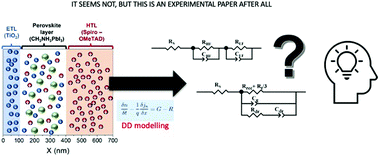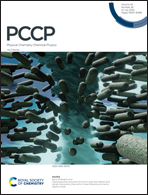Understanding equivalent circuits in perovskite solar cells. Insights from drift-diffusion simulation†
Abstract
Perovskite solar cells (PSCs) have reached impressively high efficiencies in a short period of time; however, the optoelectronic properties of halide perovskites are surprisingly complex owing to the coupled ionic–electronic charge carrier dynamics. Electrical impedance spectroscopy (EIS) is a widely used characterization tool to elucidate the mechanisms and kinetics governing the performance of PSCs, as well as of many other semiconductor devices. In general, equivalent circuits are used to evaluate EIS results. Oftentimes these are justified via empirical constructions and the real physical meaning of the elements remains disputed. In this perspective, we use drift-diffusion numerical simulations of typical thin-film, planar PSCs to generate impedance spectra avoiding intrinsic experimental difficulties such as instability and low reproducibility. The ionic and electronic properties of the device, such as ion vacancy density, diffusion coefficients, recombination mechanism, etc., can be changed individually in the simulations, so their effects can be directly observed. We evaluate the resulting EIS spectra by comparing two commonly used equivalent circuits with series and parallel connections respectively, which result in two signals with significantly different time constants. Both circuits can fit the EIS spectra and by extracting the values of the elements of one of the circuits, the values of the elements of the other circuit can be unequivocally obtained. Consequently, both can be used to analyse the EIS of a PSC. However, the physical meaning of each element in each circuit could differ. EIS can produce a broad range of physical information. We analyse the physical interpretation of the elements of each circuit and how to correlate the elements of one circuit with the elements of the other in order to have a direct picture of the physical processes occurring in the device.

- This article is part of the themed collection: PCCP Reviews


 Please wait while we load your content...
Please wait while we load your content...